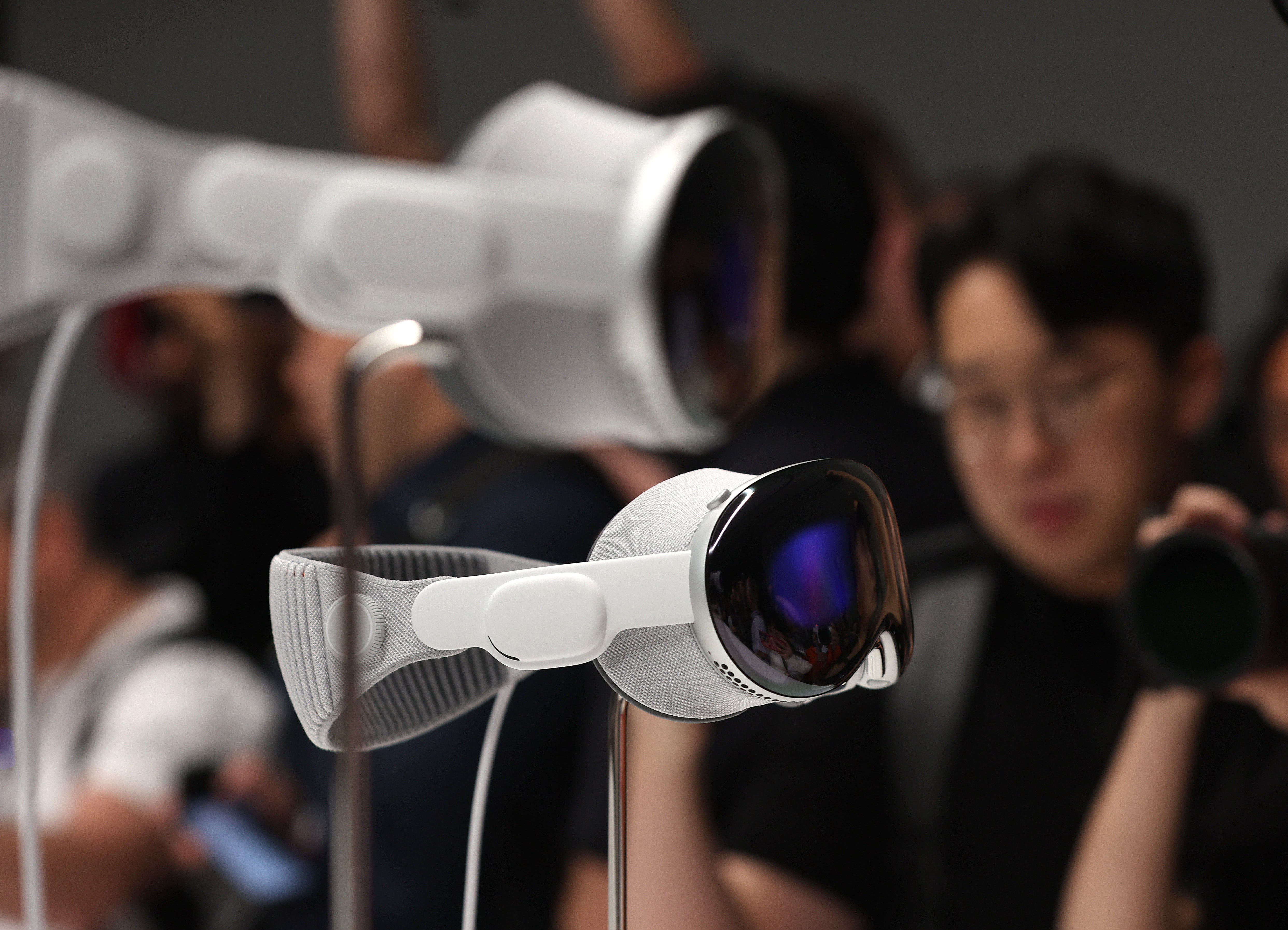Apple Vision Pro review round-up: Early users praise new headset – but point out some issues
‘EyeSight’ among those being criticised on new product

The Apple Vision Pro is a glimpse at the future of computing, according to its first reviews – but one that comes with some issues.
Apple has presented the new headset as a major new development in its platforms, arguing that it is not just an augmented reality device but the first look at a new paradigm called “spatial computing”. Until now, few people have actually been able to try it – and most have done so in limited, controlled environments.
The Vision Pro will be released later this week, after pre-orders opened last week. But before that, Apple has sent the kit to select reviewers who have revealed what the headset is actually like to use in daily life.
Most praised the headset’s central features. The cameras and display that allow its wearer to look out into the real world is close to real life, most reviews said, and the graphics inside the headset are immersive.
The vision for spatial computing also works in the software, reviewers said. The conceptual design of the augmented reality features inside the headset – where digital objects can be imposed on top of the real world – also largely works, reviewers said.
However, many pointed to some early issues with the headset. Some likened it to the first generation iPhone and Apple Watch – relatively recent products that have eventually become vastly successful but launched with some notable hardware drawbacks.
One of the headset’s issues is its weight, for instance. Reviewer John Gruber said that it was possible to use the headset for “hours at a time without any discomfort, but fatigue does set in, from the weight alone” and that you “never forget you’re wearing it”.
Apple has made some attempts to limit the weight, including putting the battery in an external battery pack that is akin to the size and weight of two iPhones stuck together. That attaches to the headset with a wire so the battery can then be placed into a pocket, for instance.
That can become a problem because it means that there is a constant fear of the battery pack falling out, wrote Mark Spoonauer from Tom’s Guide. He said that he was also concerned about the fact the battery cord can become “a bit tangled”.
Others criticised the “EyeSight” feature, which aims to project an image of people’s eyes onto the outside of the goggles to try and keep people connected to the outside world. The feature “might as well not be there” because the screen is so dark and shiny that it is hard to actually see – and if people can see your eyes, then it is a “low-res, ghostly image of them that feels like CGI” that makes for an “uncanny” effect, wrote The Verge’s Nilay Patel.
The virtual keyboard that allows users to type within the headset also came in for some criticism. Typing is slow and awkward and unlikely to be useful for writing long messages – but the headset can connect to an external keyboard or computer for writing long messages.
Nonetheless, many reviews said that the headset is a good first look at how such technology could be used for entertainment and working. Joanna Stern from the Wall Street Journal said that it was useful to put different displays for different apps around the room, including connecting to a MacBook; Cnet’s Scott Stein said that looking at pictures and videos made it feel like one could “just walk into the moment”.
Join our commenting forum
Join thought-provoking conversations, follow other Independent readers and see their replies
0Comments